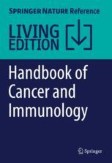Search
Search Results
-
An insight into thymidylate synthase inhibitor as anticancer agents: an explicative review
Cancer, a widespread challenge to global health, remains a puzzle of intricate molecular dynamics. This review article delves into the mystery of...

-
Development and validation a radiomics nomogram for predicting thymidylate synthase status in hepatocellular carcinoma based on Gd-DTPA contrast enhanced MRI
ObjectivesThe purpose of this study was to develop and validate a radiomics nomogram for predicting thymidylate synthase (TYMS) status in...

-
MALAT1-miRNAs network regulate thymidylate synthase and affect 5FU-based chemotherapy
BackgroundThe active metabolite of 5-Fluorouracil (5FU), used in the treatment of several types of cancer, acts by inhibiting the thymidylate...

-
The Association Between Thymidylate Synthase Gene Polymorphisms and the Risk of Ischemic Stroke in Chinese Han Population
Family history of hypertension, smoking, diabetes and alcohol consumption and atherosclerotic plaque were identified as common risk factors in IS. We...

-
A phase I open-label, dose-escalation study of NUC-3373, a targeted thymidylate synthase inhibitor, in patients with advanced cancer (NuTide:301)
Purpose5-fluorouracil (5-FU) is inefficiently converted to the active anti-cancer metabolite, fluorodeoxyuridine-monophosphate (FUDR-MP), is...

-
A possible link to uracil DNA glycosylase in the synergistic action of HDAC inhibitors and thymidylate synthase inhibitors
It is well established that thymidylate synthase inhibitors can cause cellular toxicity through uracil DNA glycosylase (UNG2)-dependent pathways....
-
Thymidylate synthase drives the phenotypes of epithelial-to-mesenchymal transition in non-small cell lung cancer
BackgroundEpithelial-to-mesenchymal transition (EMT) enhances motility, stemness, chemoresistance and metastasis. Little is known about how various...

-
Differential expression of enzymes in thymidylate biosynthesis in zebrafish at different developmental stages: implications for dtymk mutation-caused neurodegenerative disorders
BackgroundDeoxythymidine triphosphate (dTTP) is an essential building block of DNA, and defects in enzymes involved in dTTP synthesis cause...

-
3’UTR polymorphism of Thymidylate Synthase gene increased the risk of persistence of pre-neoplastic cervical lesions
BackgroundCervical cancer is caused by high-risk Human Papillomavirus (hr-HPV) infection associated with cofactors that has been analyzed as...

-
Uricase sensitizes hepatocellular carcinoma cells to 5-fluorouracil through uricase-uric acid-UMP synthase axis
Conventional chemotherapy plays a key role in hepatocellular carcinoma (HCC) treatment, however, with intrinsic or acquired chemoresistance being a...

-
Enzyme kinetics of deoxyuridine triphosphatase from Western corn rootworm
ObjectiveThe Western corn rootworm (WCR), Diabrotica virgifera virgifera , is a highly adaptable insect pest that has evolved resistance to a variety...

-
Challenges and Future of Cancer Pharmacogenetics
Pharmacogenetics is the study of genetic differences in the location and effect of drugs in different population in order to select the optimal drug...
-
Raltitrexed regulates proliferation and apoptosis of HGC-27 cells by upregulating RSK4
BackgroundRaltitrexed is a specific inhibitor of thymidylate synthase and a potential chemotherapeutic agent for the treatment of advanced gastric...

-
In silico bioprospecting of receptors for Doderlin: an antimicrobial peptide isolated from Lactobacillus acidophilus
The emergence of resistant bacteria strains against traditional antibiotics and treatments increases each year. Doderlin is a cationic and...

-
Cytotoxic Cancer Drugs
Chemotherapy is one of the pillars of cancer treatment, with first reports of its use dating back hundreds of years. Cytotoxic drugs damage malignant...
-
Challenges and Future of Cancer Pharmacogenetics
Pharmacogenetics is the study of genetic differences in the location and effect of drugs in different population in order to select the optimal drug...
-
FOXM1-induced TYMS upregulation promotes the progression of hepatocellular carcinoma
BackgroundHepatocellular carcinoma (HCC) is the most common type of primary liver cancer and one of the major causes of cancer-related death....

-
Thymidine nucleotide metabolism controls human telomere length
Telomere length in humans is associated with lifespan and severe diseases, yet the genetic determinants of telomere length remain incompletely...

-
Curcumin-Loaded Chitosan-Coated 5-Fluorouracil Encapsulated Nanozeolitic Imidazolate Framework for Combination Cancer Therapy
Background5-Fluorouracil (5-FU) is a good anti-cancer drug, but its prolonged use results in overexpression of certain enzymes like thymidylate...

-
Emerging Pathophysiology and Treatment of Prostate Cancer: Future Perspective
There is wide variability in the response of individuals to standard doses of drug therapy. This is an important problem in clinical practice, where...
